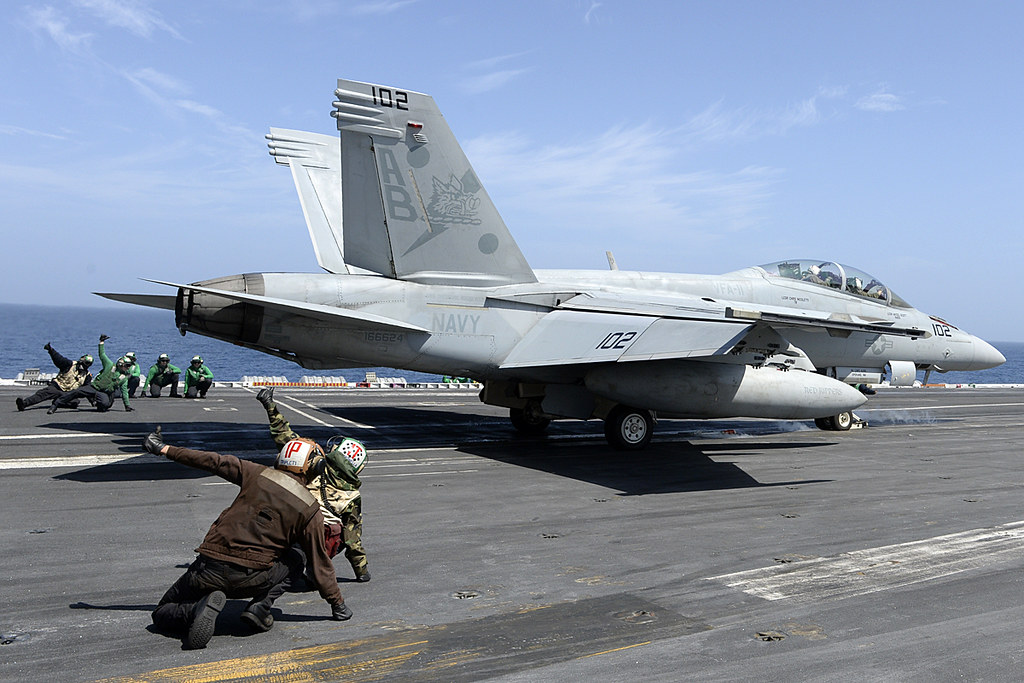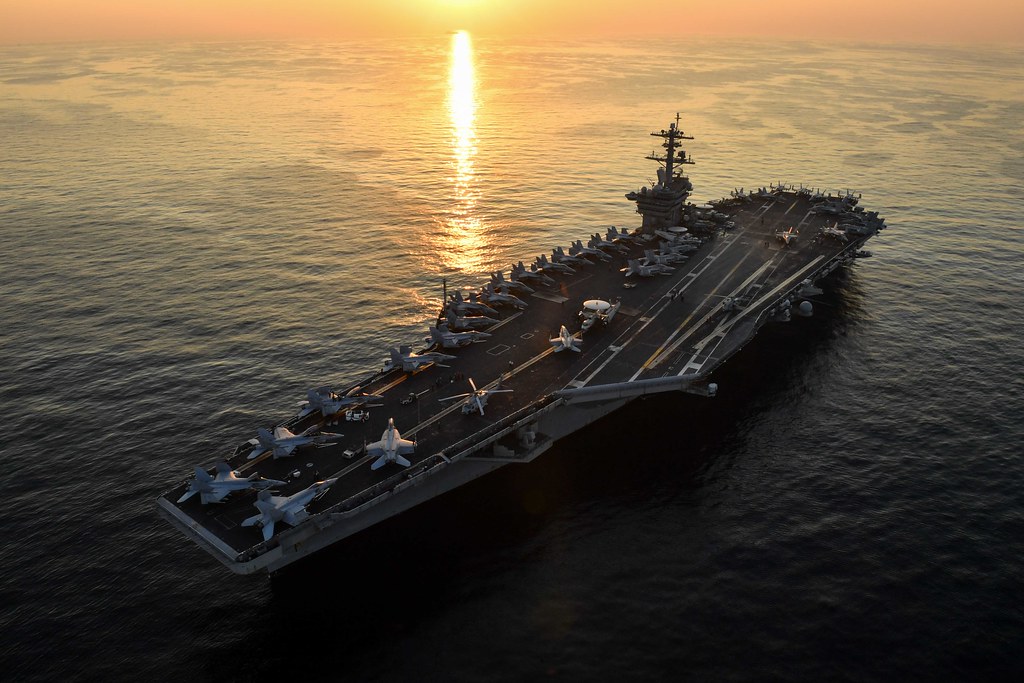
The potential vulnerability of the U.S. Navy’s mighty aircraft carriers to submarine attacks has been a topic of discussion and concern since World War II.

History has shown the devastating capability of submarines to sink large warships, which was demonstrated when the Imperial Japanese Navy’s aircraft carrier Shinano was sunk by the USS Archerfish in 1944. This incident has prompted military experts to re-evaluate the safety of modern supercarriers in light of similar threats today.

Despite their advanced technology and defenses, modern U.S. Navy supercarriers, including the Nimitz-class and Gerald R. Ford-class, could still be at risk.

The Shinano’s sinking marked a significant loss, and with modern supercarriers having even larger crews, the potential for a catastrophic loss of life in such an event today could be greater.

The USS Ronald Reagan’s simulated sinking by the Swedish submarine HSMS Gotland in 2005 during anti-submarine warfare exercises has been a wake-up call for the U.S. Navy.

“Despite having an entire carrier strike group, including destroyers, helicopters, and planes hunting for it, the HSMS Gotland managed to sneak by the formidable anti-submarine defensive net around the USS Ronald Reagan and score several simulated torpedoes ‘hits’,” wrote Stavros Atlamazoglou for The National Interest.

The U.S. Navy’s aircraft carriers, while being some of the world’s most powerful warships, are not impervious to threats. This was further underscored when a French Rubis-class submarine “sank” the USS Theodore Roosevelt in a 2015 joint exercise with the French Navy.

The Rubis-class submarines, despite their small size and aging technology, have been proven to be a significant threat due to their stealth and maneuverability. They are armed with a lethal weapons control system and carry a mix of missiles and torpedoes.

France’s Rubis-class submarines are a part of an aging fleet that has been in service since the 1980s, with the last three remaining vessels based in Toulon. Even as France plans to replace these with the more modern and heavily armed Suffren-class submarines, the older Rubis-class has shown its capability in naval exercises.

While the U.S. Navy acknowledges the skill of submarine crews and the efficacy of their vessels, these exercises reveal the ongoing need for improved countermeasures and strategies to protect carrier strike groups.

With the development of long-range missiles, stealth aircraft, and nuclear-armed torpedoes, the landscape of naval warfare is becoming more complex.

The U.S. Navy’s reliance on its carrier fleet faces scrutiny as incidents during wargames reflect the carriers’ susceptibility to submarine threats. The sinking of an aircraft carrier would not only be a massive financial loss but also a strategic and moral blow.

The U.S. Navy’s ongoing effort to protect its supercarriers involves a multifaceted approach, including the development of more effective countermeasures against submarine threats, keeping abreast of technological advancements in adversary weapons systems, and potentially reconsidering the role of aircraft carriers in future naval conflicts.

Ultimately, the simulated sinkings of U.S. aircraft carriers by foreign submarines serve as stark reminders that even the most advanced and seemingly invincible warships are not immune to the persistent and evolving threats beneath the waves.

The U.S. Navy must continuously adapt and innovate to ensure the security and effectiveness of its fleet in an ever-changing landscape of naval warfare.
Relevant articles:
– How a Submarine Could Sink a U.S. Navy Aircraft Carrier No Problem, nationalinterest.org
– France Used a Small Nuclear Attack Submarine to ‘Sink’ A Navy Aircraft Carrier, The National Interest
– AP PHOTOS: Aboard France’s aging nuclear submarines — old boats but new missions, AP News
– Think a Navy Aircraft Carrier Is Unsinkable? Meet the Rubis, QOSHE

